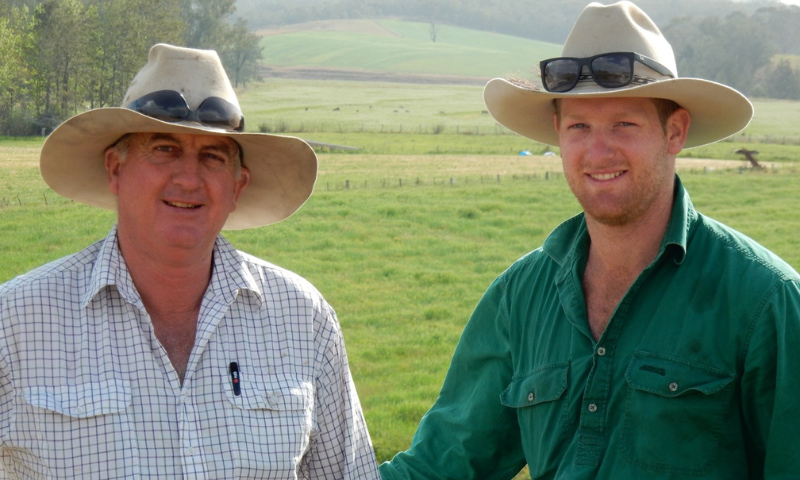Beef, Beans And NatraMin – Reduced Fertiliser Costs And Higher Yields Resulted In Greater Profitability
Product Range: NatraMin Cal-S
Region: Willawarrin, NSW
- Reduced fertiliser costs for bean and pasture rotation
- Increased soybean yield
- Excellent weight gain for stock
After looking at the results of NatraMin Cal-S in other areas and reading about it in our newsletter, David Duff contacted us to assist with his Soybean program.
David, Caroline and son Campbell run a successful ‘Beef & Bean’ program planting around 100ha of soybeans each year adjacent to their 1200 head of commercial cattle. ‘Beef & Beans’ is a high input program, so like every farmer, the Duffs need to be able to justify making changes in their management program.
David reports,
After working on the advice of Roger Newman from AgSolutions for two years, we’ve seen the benefits of NatraMin for ourselves. My lie detector is the header, and our yields have been much higher than with our previous fertiliser program. We budget on a yield of 1t/acre and normally hit around 1.5t/acre. This year our Soybeans averaged nearly 2t/acre (and some of this is ridge country) with some blocks yielding nearly 4t.
Since using NatraMin we can see the difference in the colour of our beans. Previously, we were using 220kg of Triple Super with 10% Sulphur and 70kg of Potash per hectare. In the past two years, we’ve used 200-300kg of NatraMin and have reduced other fertiliser to just 50kg of triple Super per hectare, saving us at least 30% per hectare.”
The Duffs use a Soybean rotation to improve their grazing country, turning carpet grass paddocks into soybean crops for a 4-year rotation. Prior to soybean harvest, winter forages (rye/oats) are over-sewn using a helicopter for spreading.
“The rye/oats is ready to graze once the soybeans are harvested. Because we need quick numbers to utilize the feed, we buy in calves for our beef and bean program. We stock at 2.5 calves/ha with weight gains of 250kg/ha from June through to September/October.
In the fifth year, paddocks are then sewn back to a tropical pasture mix with rye being over-sewn to fill the feed gap during winter.”
